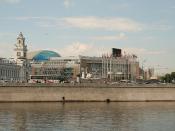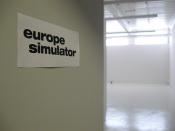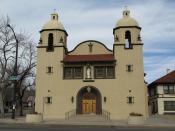In the times before and during the transition from medieval Europe to the Renaissance, many new ideas and philosophies were introduced. The rise and fall of feudalism, the development of new territories, and the growing appreciation for culture and education all contributed to the economic "boom" that occurred following the Reconstruction period. The same held true for the shift to the Modern Era: the most prominent consistency was change. Little by little, through learning from its mistakes while at the same time addressing new issues, 16th and 17th century Europe defined itself as a leading world power. The three most prominent changes of the time came through Europe's internal religious split, the institution of an absolute monarchy, and the new artistic styles brought about by politics.
Although the Catholic Church had already seen its share of troubles long before the 1500's, those were nothing compared to what the church had to deal with during the Protestant Reformation. For the duration of the Renaissance, the Catholic Popes and Cardinals held supreme power, with the monarchs or heads-of-state responding to their appropriate member of the Church. Temporal greed corrupted even the most promising leaders, and rebellions among the people were not uncommon. What marked the beginning of the Modern Era, however, was the time that one of those rebellions was successful, and Protestantism was formed as an alternate to Roman Catholicism. With the introduction of new hope by Martin Luther and John Calvin, the Church now saw that in order to survive it had to make some changes itself. So came the development of the Jesuits, the emergence of a revived papacy, and the Council of Trent, and a refreshed wave of militant Catholicism resulted. However, without the support of many ex-Catholics, the Church was reduced to only one...


